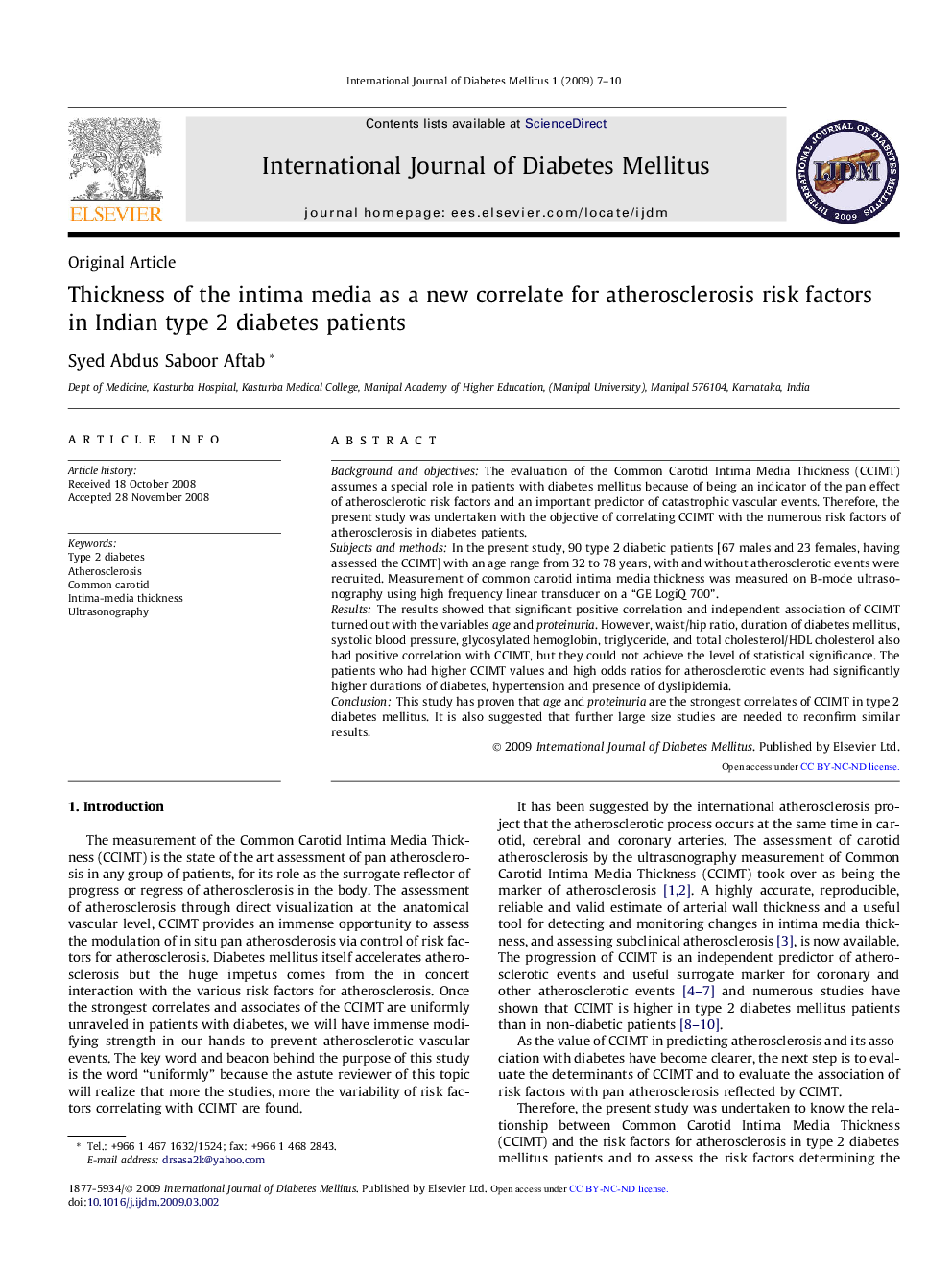| Article ID | Journal | Published Year | Pages | File Type |
|---|---|---|---|---|
| 3270457 | International Journal of Diabetes Mellitus | 2009 | 4 Pages |
Background and objectivesThe evaluation of the Common Carotid Intima Media Thickness (CCIMT) assumes a special role in patients with diabetes mellitus because of being an indicator of the pan effect of atherosclerotic risk factors and an important predictor of catastrophic vascular events. Therefore, the present study was undertaken with the objective of correlating CCIMT with the numerous risk factors of atherosclerosis in diabetes patients.Subjects and methodsIn the present study, 90 type 2 diabetic patients [67 males and 23 females, having assessed the CCIMT] with an age range from 32 to 78 years, with and without atherosclerotic events were recruited. Measurement of common carotid intima media thickness was measured on B-mode ultrasonography using high frequency linear transducer on a “GE LogiQ 700”.ResultsThe results showed that significant positive correlation and independent association of CCIMT turned out with the variables age and proteinuria. However, waist/hip ratio, duration of diabetes mellitus, systolic blood pressure, glycosylated hemoglobin, triglyceride, and total cholesterol/HDL cholesterol also had positive correlation with CCIMT, but they could not achieve the level of statistical significance. The patients who had higher CCIMT values and high odds ratios for atherosclerotic events had significantly higher durations of diabetes, hypertension and presence of dyslipidemia.ConclusionThis study has proven that age and proteinuria are the strongest correlates of CCIMT in type 2 diabetes mellitus. It is also suggested that further large size studies are needed to reconfirm similar results.
